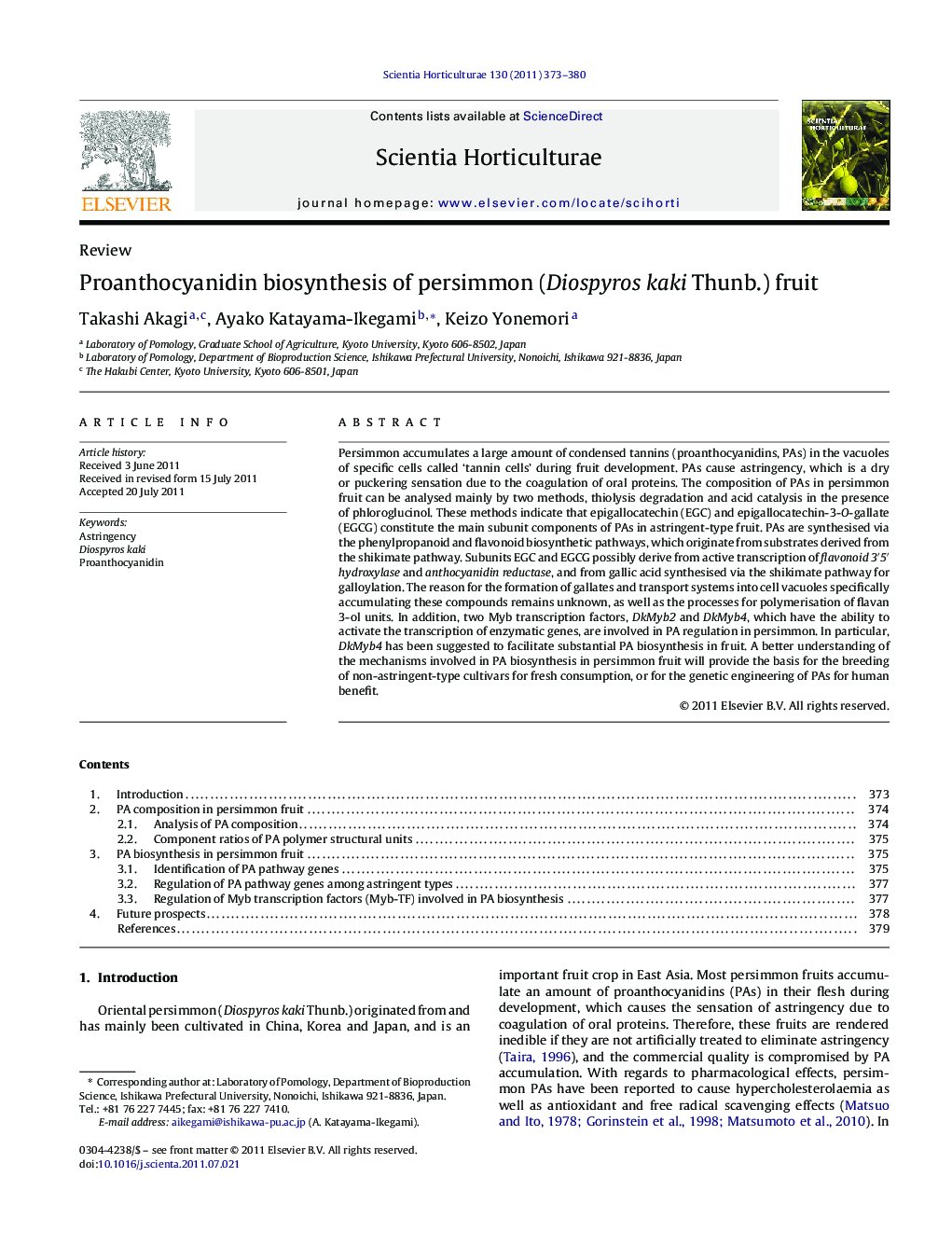| کد مقاله | کد نشریه | سال انتشار | مقاله انگلیسی | نسخه تمام متن |
|---|---|---|---|---|
| 4568194 | 1331290 | 2011 | 8 صفحه PDF | دانلود رایگان |

Persimmon accumulates a large amount of condensed tannins (proanthocyanidins, PAs) in the vacuoles of specific cells called ‘tannin cells’ during fruit development. PAs cause astringency, which is a dry or puckering sensation due to the coagulation of oral proteins. The composition of PAs in persimmon fruit can be analysed mainly by two methods, thiolysis degradation and acid catalysis in the presence of phloroglucinol. These methods indicate that epigallocatechin (EGC) and epigallocatechin-3-O-gallate (EGCG) constitute the main subunit components of PAs in astringent-type fruit. PAs are synthesised via the phenylpropanoid and flavonoid biosynthetic pathways, which originate from substrates derived from the shikimate pathway. Subunits EGC and EGCG possibly derive from active transcription of flavonoid 3′5′ hydroxylase and anthocyanidin reductase, and from gallic acid synthesised via the shikimate pathway for galloylation. The reason for the formation of gallates and transport systems into cell vacuoles specifically accumulating these compounds remains unknown, as well as the processes for polymerisation of flavan 3-ol units. In addition, two Myb transcription factors, DkMyb2 and DkMyb4, which have the ability to activate the transcription of enzymatic genes, are involved in PA regulation in persimmon. In particular, DkMyb4 has been suggested to facilitate substantial PA biosynthesis in fruit. A better understanding of the mechanisms involved in PA biosynthesis in persimmon fruit will provide the basis for the breeding of non-astringent-type cultivars for fresh consumption, or for the genetic engineering of PAs for human benefit.
► Persimmon fruit accumulate an amount of proanthocyanidins, which cause astringency.
► PAs are synthesised via the phenylpropanoid and flavonoid biosynthetic pathways.
► Epigallocatechin (EGC) and epigallocatechin-3-O-gallate (EGCG) constitute the main subunit components of PAs.
► EGC and EGCG possibly derive from active transcription of flavonoid 3′5′ hydroxylase and anthocyanidin reductase, and from gallic acid synthesised via the shikimate pathway for galloylation.
► A better understanding of the mechanisms involved in PA biosynthesis in persimmon fruit will provide the basis for the breeding of non-astringent-type cultivars for fresh consumption.
Journal: Scientia Horticulturae - Volume 130, Issue 2, 14 September 2011, Pages 373–380